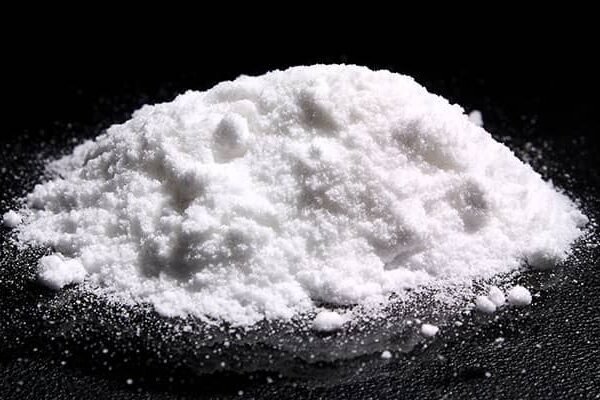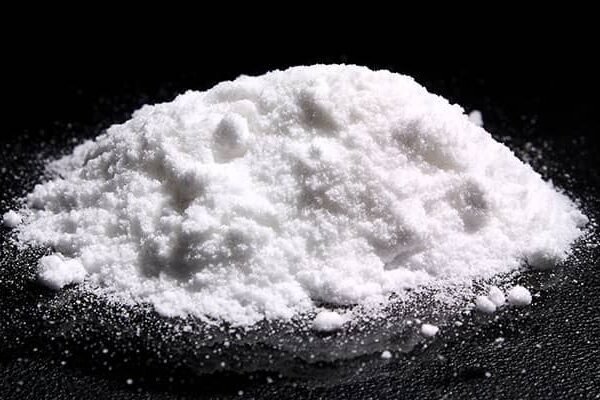Exploring the Enigma: What is Dimethyltryptamine?
 Image Alt Text: dimethyltryptamine – dimethyltryptamine
Image Alt Text: dimethyltryptamine – dimethyltryptamineThe Mystique of Dimethyltryptamine (DMT)
Dimethyltryptamine is a powerful hallucinogenic compound that has fascinated humans for centuries. Known for producing intense and vivid hallucinations, it offers profound experiences that many describe as spiritual journeys or “awakening” moments. Here’s a quick glimpse at what makes dimethyltryptamine unique:
- Naturally Occurring: Found in various plants and even in the human brain.
- Spiritual Tool: Traditionally used in shamanic rituals in South America.
- Psychoactive Potency: Offers intense visual and auditory experiences.
- Legal Status: Classified as a Schedule I substance in the US.
Steeped in history, dimethyltryptamine has been a part of cultural practices for thousands of years. Indigenous communities in South America have long used it as a key ingredient in ayahuasca—a ceremonial brew believed to open doors to spiritual worlds and insight. The allure of dimethyltryptamine persists today, captivating curious explorers and researchers alike. Its reputation as the “spirit molecule” underscores its potential to deeply alter perceptions and expand consciousness. Yet, despite its historical roots, its use remains controversial and heavily regulated.
Understanding Dimethyltryptamine
Dimethyltryptamine, often referred to as DMT, is a naturally occurring substance with remarkable hallucinogenic effects. When consumed, it can lead to intense visual and auditory hallucinations, offering users a temporary escape into a world of vivid colors and shapes. But how does it work, and where does it come from?
Natural Occurrence
DMT is found in a variety of plants and animals. In the plant kingdom, it’s commonly present in species like Psychotria viridis and Mimosa tenuiflora. These plants have been used for centuries in traditional Amazonian ceremonies, where DMT is a key component of ayahuasca, a potent brew used for spiritual exploration.
Interestingly, DMT is also produced in the human brain. Although its exact role is not fully understood, it’s believed to interact with serotonin receptors, which are crucial for mood regulation and perception. This interaction is what leads to the profound changes in consciousness experienced during a DMT trip.
Synthetic Production
Aside from its natural sources, DMT can also be synthesized in laboratories. The synthetic version typically appears as a white, crystalline powder. This form is popular among recreational users due to its purity and potency.
 Image Alt Text: Crystalline DMT powder – dimethyltryptamine
Image Alt Text: Crystalline DMT powder – dimethyltryptamineSynthetic DMT can be consumed in several ways, including smoking and injection. However, its effects are short-lived, usually lasting less than 30 minutes. Despite its brief duration, the experience is often described as a “businessman’s trip,” due to its intense nature and rapid onset.
In summary, dimethyltryptamine is a fascinating compound with both natural and synthetic origins. Its ability to profoundly alter perception and consciousnessconsciousness has made it a subject of intrigue and study, as well as a tool for spiritual exploration.
Methods of Consumption
Dimethyltryptamine can be consumed in several ways, each with its own unique effects and experiences.
Smoking
Smoking is one of the most common methods of consuming DMT. When smoked, DMT’s effects kick in almost immediately, often within just a few minutes. Users report intense visual hallucinations, seeing complex geometric patterns and vibrant colors. This method is sometimes called the “businessman’s trip” because of its brief duration, typically lasting about 20 to 30 minutes.
Ayahuasca Brew
Ayahuasca is a traditional Amazonian brew that combines DMT-containing plants with monoamine oxidase inhibitors (MAOIs). This combination allows DMT to be orally active. The effects of ayahuasca are more prolonged, often lasting several hours. Users often experience deep introspective journeys, emotional purging, and a sense of interconnectedness with the universe.
Injection and Snorting
Though less common, DMT can also be injected or snorted. These methods result in a rapid onset of effects, similar to smoking. However, they can be more intense and overwhelming, making them less popular. The risks associated with these methods are higher due to the potential for a more unpredictable experience.
Effects and Experiences
Visual Hallucinations: DMT is renowned for its vivid visual hallucinations. Users often describe seeing kaleidoscopic patterns, impossible objects, and even encountering otherworldly entities.
Altered Perception: Beyond visuals, DMT can dramatically alter perception. Time may seem to slow down or speed up, and users often report a sense of dissociation from their body.
Euphoria: Some users experience intense feelings of euphoria and a deep sense of peace during their DMT journey.
Risks and Safety
While DMT offers unique experiences, it comes with significant risks:
Cardiovascular Effects: DMT can cause increased heart rate and blood pressure. This can be dangerous for individuals with pre-existing heart conditions.
Serotonin Syndrome: When combined with certain medications, especially antidepressants, DMT can lead to serotonin syndrome, a potentially life-threatening condition.
Psychological Impact: DMT can induce intense anxiety, confusion, or fear, especially in high doses. It’s crucial to approach it with caution, in a safe, controlled environment.
 Image Alt Text: Understanding the cardiovascular effects and psychological impact of DMT – dimethyltryptamine infographic 4_facts_emoji_nature
Image Alt Text: Understanding the cardiovascular effects and psychological impact of DMT – dimethyltryptamine infographic 4_facts_emoji_natureIn conclusion, while dimethyltryptamine offers profound experiences, be aware of its risks. Always prioritize safety and ensure a suitable setting before starting on a DMT journey.
Legal Status and Research
Therapeutic Applications
Dimethyltryptamine (DMT) is classified as a Schedule I substance in the United States, which means it’s considered illegal for general use due to its high potential for abuse and lack of recognized medical applications. However, this classification hasn’t stopped researchers from exploring its potential benefits in controlled settings.
Therapeutic Potential
Despite its legal status, there’s growing interest in the therapeutic potential of DMT. Researchers are investigating how this powerful psychedelic could help treat various mental health disorders. The key lies in its ability to promote neuroplasticity, which helps the brain reorganize itself. This could potentially lead to improvements in mood and cognition.
Clinical Studies
Several clinical studies are underway to better understand how DMT can be used therapeutically. In these studies, researchers are examining the effects of DMT on conditions such as depression, anxiety, and even psychosis. Preliminary results are promising, suggesting that DMT could offer relief where traditional treatments have failed.
Mental Health Applications
For mental health disorders like depression and anxiety, DMT might provide new hope. Some studies suggest that DMT can help reduce symptoms of anxiety, offering a potential breakthrough for patients who haven’t responded well to other treatments. The profound experiences induced by DMT might help patients process difficult emotions and achieve a sense of peace.
Anxiety Treatment
DMT’s impact on anxiety is particularly noteworthy. Patients with severe anxiety, including those experiencing existential distress, have reported lasting benefits from psychedelic-assisted therapy. This is especially relevant for individuals facing terminal illnesses, where traditional treatments often fall short.
Psychosis Research
Research into DMT’s effects on psychosis is still in its early stages. However, the unique way DMT interacts with serotonin receptors in the brain suggests it could help in understanding and potentially treating psychotic disorders. By altering perception and cognition, DMT might offer insights into the workings of the psychotic mind.
As research continues, the therapeutic applications of DMT are expanding. This could mark the beginning of a new era in mental health treatment, offering fresh hope for those with challenging conditions.
Frequently Asked Questions about Dimethyltryptamine
What is the street name for DMT?
Dimethyltryptamine, often referred to as DMT, goes by several street names. Some people call it “dimitri,” while others know it as the “spirit molecule.” These names highlight its reputation for inducing profound, mystical experiences that many users describe as spiritual or life-changing. The term “businessman’s trip” is also common, referring to its quick yet intense effects that fit into a short time frame.
Where is DMT found naturally?
DMT is not just a laboratory creation; it’s found in nature as well. Several plants contain DMT, such as Psychotria viridis and Mimosa tenuiflora. These plants are often used in traditional South American rituals, particularly in the preparation of ayahuasca. Interestingly, DMT is also present in the human brain. While its exact role is still a mystery, researchers are investigating whether it acts as a neurotransmitter, facilitating communication within the brain.
What is the use of Dimethyltryptamine?
Dimethyltryptamine is primarily known for its use in inducing psychedelic experiences. Users often report vivid visual hallucinations and a heightened sense of euphoria. These experiences can lead to altered perceptions of time and space, providing insights that some find spiritually enlightening.
Beyond recreational use, DMT is gaining attention in therapeutic research. Scientists are exploring its potential to treat mental health disorders like depression and anxiety. The ability of DMT to promote neuroplasticity—helping the brain to reorganize itself—could be key in developing new treatments where traditional methods have fallen short. As research continues, DMT could become a valuable tool in the field of mental health.
Conclusion
At Quality Trip Resort, we believe in the transformative potential of dimethyltryptamine (DMT) and are committed to providing safe and responsible access to this powerful substance. We understand that with its profound effects come significant responsibilities, both for us and for those who choose to explore these experiences.
Harm Reduction
Safety is our top priority. We encourage users to approach DMT with caution and preparation. Harm reduction strategies are essential when using psychedelics. Start with a low dose to understand how DMT affectsaffects you personally. Always use in a safe environment and with people you trust. Consider having a ‘trip sitter’—someone sober who can help if needed.
We emphasize informed use. Research the correct form and dosage, and be aware of potential interactions with other substances. Mixing DMT with drugs like tramadol or cannabis can increase risks, including seizures or anxiety. Understanding these risks can help prevent negative experiences.
Responsible Use
Responsible use of DMT involves not only personal safety but also legal awareness. While some placesplaces have decriminalized DMT, it remains illegal in many regions. Always check local laws and regulations before use. If you or someone you know is struggling with substance-related issues, seek help from professional services.
As part of our commitment to responsible use, we provide fast shipping and secure payment methods, ensuring that our customers can access DMT safely and discreetly. We aim to empower individuals with the knowledge and resources needed to make informed decisionsdecisions about their psychedelic journeys.
For those interested in exploring DMT further, we offer a range of products with global delivery. Our goal is to support your journey with quality products and reliable information, helping you open up the potential of this enigmatic substance responsibly.

